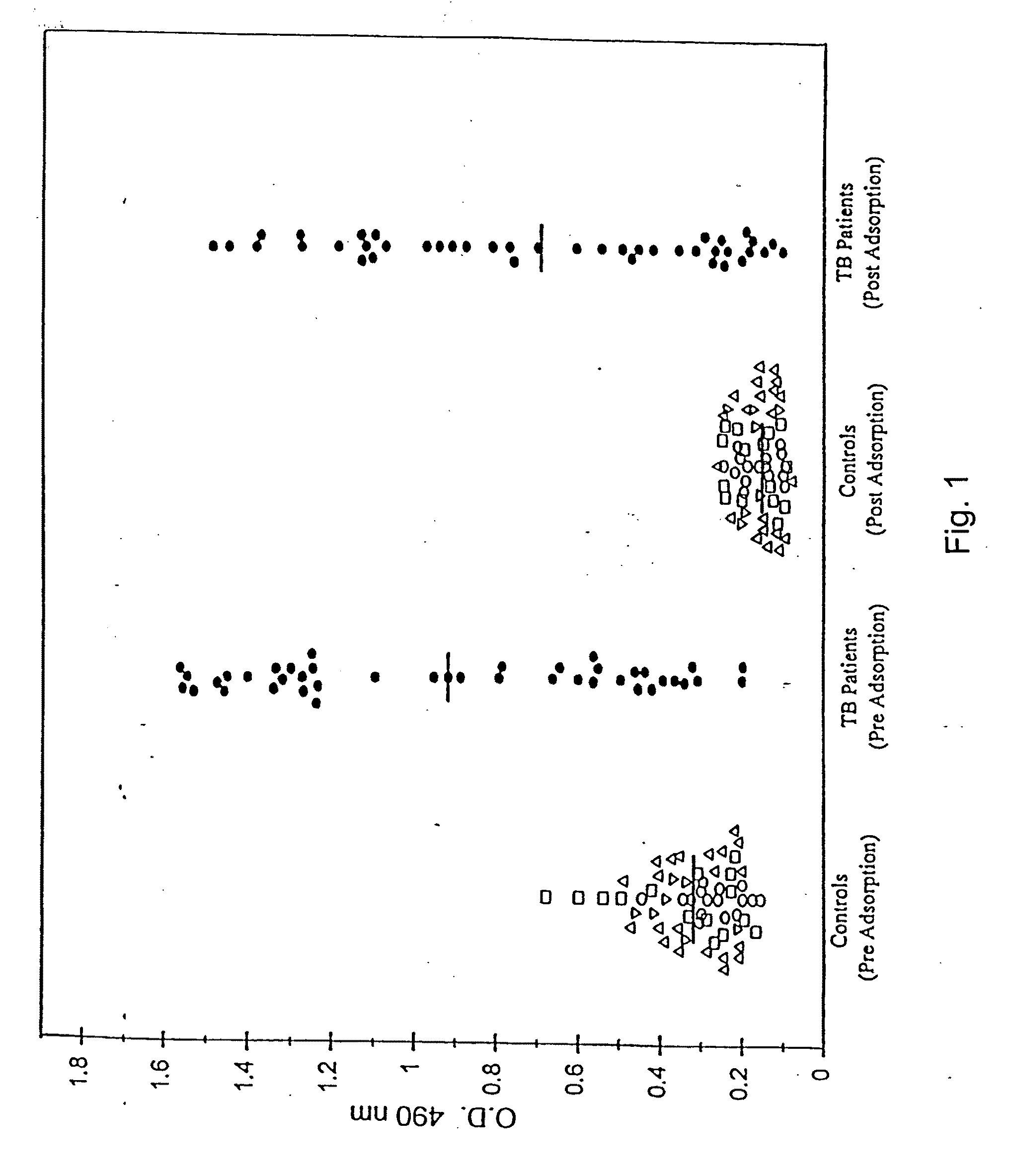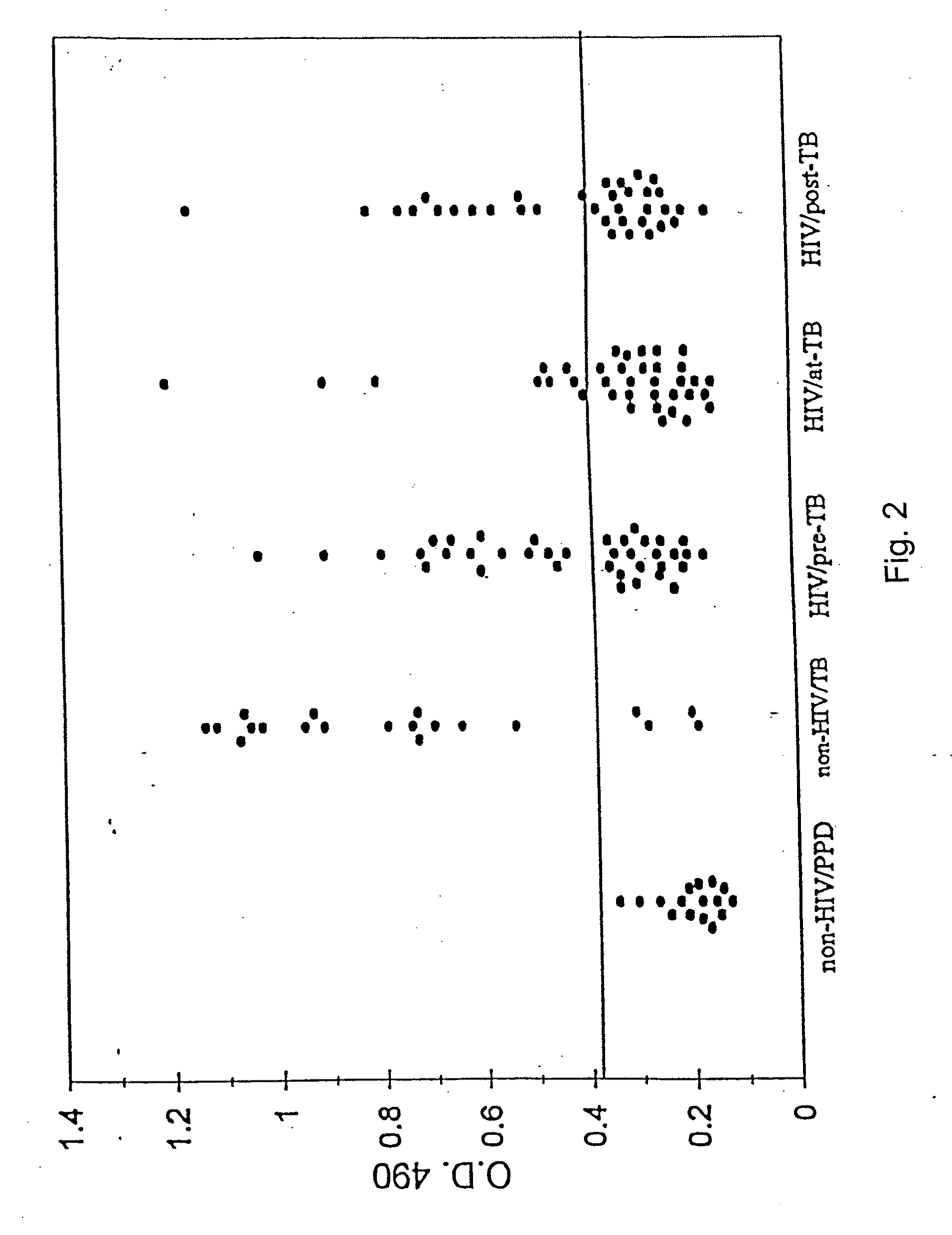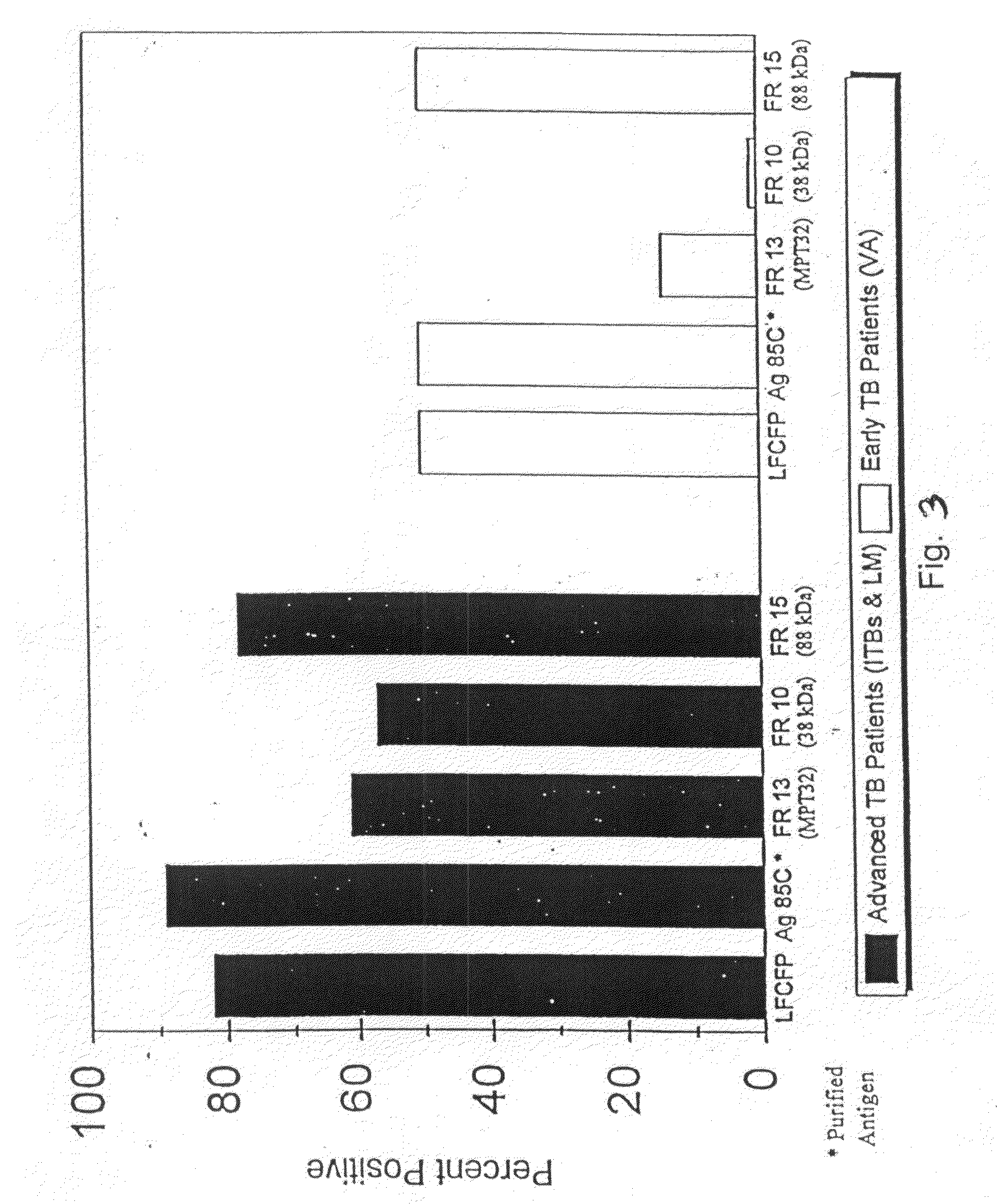Early detection of mycobacterial disease using peptides
a technology of peptides and mycobacterial disease, applied in the field of microbiology and medicine, can solve the problems of false positive results in ppd skin tests, inconvenient use, and inability to determine the optimal time for such therapy, and achieve the effect of reducing interferen
- Summary
- Abstract
- Description
- Claims
- Application Information
AI Technical Summary
Benefits of technology
Problems solved by technology
Method used
Image
Examples
example i
Immunodominance of High Molecular Weight Antigens in Human Antibody Responses to Mtb Antigens
Materials and Methods
[0226]The study population included 58 HIVneg individuals with confirmed pulmonary TB. Of these, 16 were individuals attending the Infectious Disease Clinic at the Veterans Affairs Medical Center, New York. All patients were Mtb culture-positive, 9 / 16 patients were smear-negative, 14 / 16 showed minimal to no radiological lesions, and all were bled either prior to, or within 1-2 weeks of initiation of chemotherapy for TB. Eight sera were obtained from Leonid Heifitz and Lory Powell (National Jewish Center, Denver, Colo.). An additional 20 sera were provided by J.M. Phadtare (Grant Medical College, Bombay, India). Fourteen serum samples obtained from Lala Ram Sarup Tuberculosis Hospital, Mehrauli, New Delhi, India were provided by S. Singh. A majority of these 42 patients were smear-positive, had radiological appearance of moderate to advanced pulmonary lesions and were ble...
example ii
Antibodies to an 88 kDa Secreted Antigen of M. tuberculosis Serve as a Surrogate Marker of Pre-Clinical TB in HIV-Infected Subjects
A. Materials and Methods
[0256]1. Sera:
[0257]The study population included 49 HIV-infected individuals attending the Infectious Disease Clinic at the V.A. Medical Center, New York, who developed or presented with TB (HIV / TB) during the last several years. A total of 259 serum samples were available from these individuals. Of these samples:[0258](a) 136 were obtained from 38 patients on several occasions prior to manifestation of clinical TB (“HIV / pre-TB”);[0259](b) 37 samples were obtained from 37 patients at the time of clinical and bacteriological diagnosis of TB (“HIV / at-TB”) and included several patients from group (a); and[0260](c) 86 sera were obtained from 35 patients within a few months of initiation of therapy for TB (“HIV / post-TB”). A majority of patients in group (c) were also members of groups (a) and / or (b).
The diagnosis of TB was based on po...
example iii
Definition of Mtb Culture Filtrate Proteins by 2-D Polyacrylamide Gel Electrophoresis Mapping, N-terminal Amino Acid Sequencing and Electrospray Mass Spectrometry
[0298]As described above, in vitro cultivation of Mtb results in the accumulation of a complex set of proteins in the extracellular milieu, collectively termed the culture filtrate proteins (CFPs). The most notable feature of this protein fraction is its immunodominance. CFP has been suggested to be a major repository of antigens involved in the protective immune response and to provide biochemical definition of this fraction. More recently, it has been contended that the dichotomous immune responses engendered by vaccination of experimental animals with live versus heat killed bacilli are attributable to the active secretion of such antigens by viable Mtb . This hypothesis is supported by the demonstration of the ability of Mtb CFP to induce a protective T-cell response. Attempts to define the immunologically active compon...
PUM
| Property | Measurement | Unit |
|---|---|---|
| Fraction | aaaaa | aaaaa |
| Electric charge | aaaaa | aaaaa |
| Atomic weight | aaaaa | aaaaa |
Abstract
Description
Claims
Application Information
 Login to View More
Login to View More - R&D
- Intellectual Property
- Life Sciences
- Materials
- Tech Scout
- Unparalleled Data Quality
- Higher Quality Content
- 60% Fewer Hallucinations
Browse by: Latest US Patents, China's latest patents, Technical Efficacy Thesaurus, Application Domain, Technology Topic, Popular Technical Reports.
© 2025 PatSnap. All rights reserved.Legal|Privacy policy|Modern Slavery Act Transparency Statement|Sitemap|About US| Contact US: help@patsnap.com



